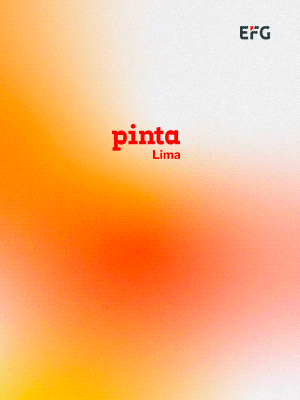QUESTIONING TRADITIONS AT CARA
The Center for Art, Research and Alliances (CARA) spring 2025 exhibition, continents like seeds, brings together the work of La Chola Poblete (b. 1989, Argentina), Niño de Elche (b. 1985, Spain), and Pedro G. Romero (b. 1964, Spain); through sound, sculpture, performance, drawing, and painting, the show unravels and exposes the contradictions and ambiguities of colonial legacies.
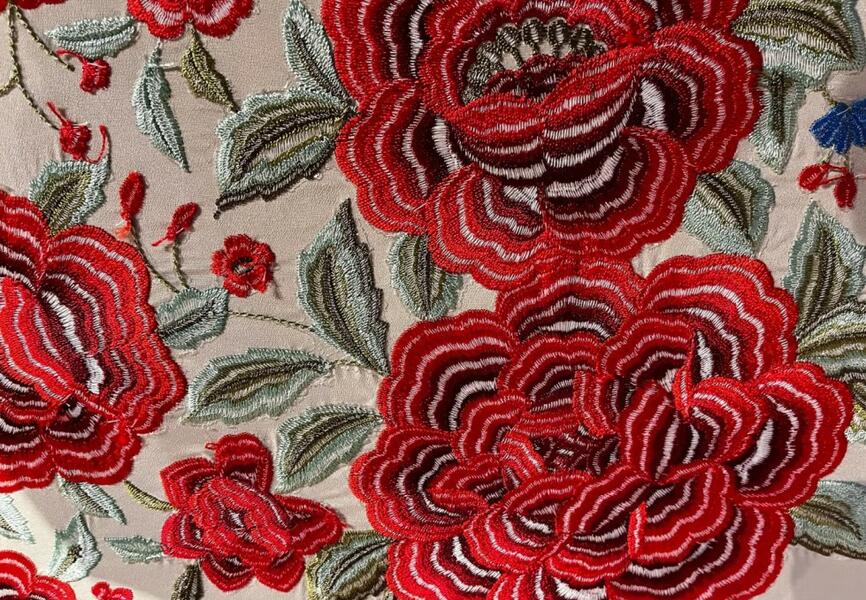
Tracing entanglements of erasure and violence, visibility and appropriation, the artists question tradition and offer counter-narratives of resistance, transformation, and life.
Performer Niño de Elche and artist Pedro G. Romero’s installation, co-commissioned by CARA and the Biennale of Sydney, engages with transnational histories of flamenco through research, music, and embodied practice. Titled Sadopítna, o sea, antípodas, puesto del revés y boca abajo (Sedopitna, or antipodes, turned inside out and upside down), 2023, the audiovisual collaboration maps antipodean connections formed through colonial trade routes, particularly the Manila Galleon. Arranged as a suite of four soundboxes wrapped in Mantones de Manila, embroidered shawls derived from traditional Filipina alampay, the work unfolds through nine songs which interrogate and disentangle colonial contaminations across the Pacific Ocean and around Mexico, Thailand, the Philippines, Japan, Indonesia, Aotearoa (otherwise known as New Zealand), and Samoa.
-
Niño de Elche and Pedro G. Romero, 'Sadopítna, o sea, antípodas, puesto del revés y boca abajo (Sedopitna, or antipodes, turned inside out and upside down),' 2023. Detail courtesy the artists
-
Niño de Elche and Pedro G. Romero, 'Sadopítna, o sea, antípodas, puesto del revés y boca abajo (Sedopitna, or antipodes, turned inside out and upside down),' 2023. Detail courtesy the artists
-
La Chola Poblete, 'Venus, marrona rajada,' 2023. Iron structure, galvanized mesh, bread, and wig. 162x30x30 cm. Installation view courtesy the artist
Throughout the course of the exhibition, Niño de Elche will be joined by artists, musicians, and dancers for a series of live performances that animate the songs’s lyrics and illuminate flamenco’s potential as a tool for rebellion against systems of power. “The boxes and the bodies of the artists become one through performance,” remarked G. Romero.
La Chola Poblete’s work explores the body and past narratives through performance, video, painting, and sculpture. Merging her own identity with cultural and religious figures, she questions how bodies should behave under capitalism and patriarchy, and how an Indigenous, gendered body can rebel through creation. Her work combines ancestral knowledge, queer fantasies, and pop iconographies, endowing figures like the Virgin and Pachamama with decolonial potential. Her sculpture Venus, marrona rajada (2023) expands the notion of fluidity, while her syncretic approach critiques and reinterprets spiritual power, rejecting its colonial appropriation.
Expanding beyond any singular history or culture, continents like seeds disrupts trails of extractivist violence and surfaces the subaltern imaginings of La Chola Poblete, Niño de Elche, and Pedro G. Romero. In her 1969 publication Who Look at Me, poet, activist, and scholar June Jordan (1936–2002) writed: “New energies of darkness we/ disturbed a continent/ like seeds.” This exhibition, in line with Jordan’s writing and thinking, draws in such energies of rupture and renewal. It is curated by Manuela Moscoso, Executive and Artistic Director, with Marian Chudnovsky, Curatorial Assistant.
continents like seeds will be on display until May 18, 2025, at CARA, 225 West 13th Street, New York (United States).
Related Topics
May interest you
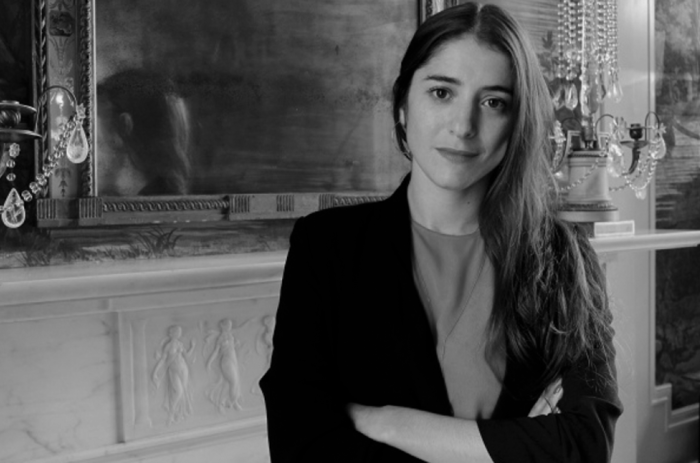
The Vilcek Foundation has named Argentine Director and Chief Curator of Art Aimé Iglesias Lukin as one of the three recipients of the Vilcek Prize for Creative Promise in Curatorial Work. The award recognizes immigrant contributions to the arts and sciences in the United States.
AIMÉ IGLESIAS LUKIN IS THE WINNER OF THE VILCEK AWARD
The Vilcek Foundation has named Argentine Director and Chief Curator of Art Aimé Iglesias Lukin as one of the three recipients of the Vilcek Prize for Creative Promise in Curatorial Work. The award recognizes immigrant contributions to the arts and sciences in the United States.

The Vilcek Foundation has named Argentine Director and Chief Curator of Art Aimé Iglesias Lukin as one of the three recipients of the Vilcek Prize for Creative Promise in Curatorial Work. The award recognizes immigrant contributions to the arts and sciences in the United States.
AIMÉ IGLESIAS LUKIN IS THE WINNER OF THE VILCEK AWARD
The Vilcek Foundation has named Argentine Director and Chief Curator of Art Aimé Iglesias Lukin as one of the three recipients of the Vilcek Prize for Creative Promise in Curatorial Work. The award recognizes immigrant contributions to the arts and sciences in the United States.
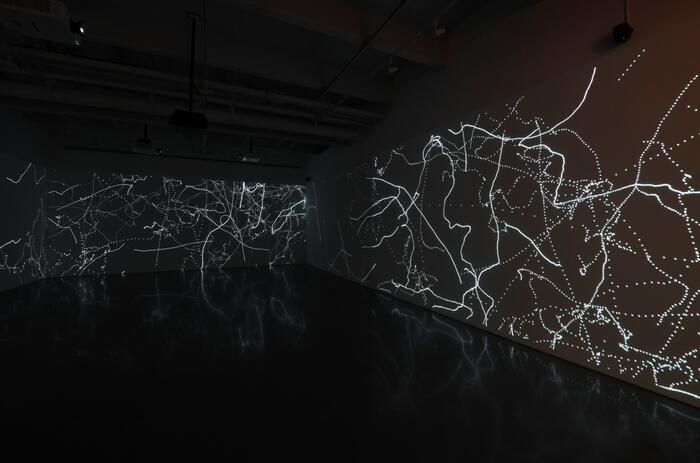
CORRESPONDENCES at Kurimanzutto, the ongoing collaboration between Soundwalk Collective and Patti Smith, marks the first time this body of work is exhibited in New York and in a gallery space; the exhibition explores diverse geographies, histories, and natural environments.
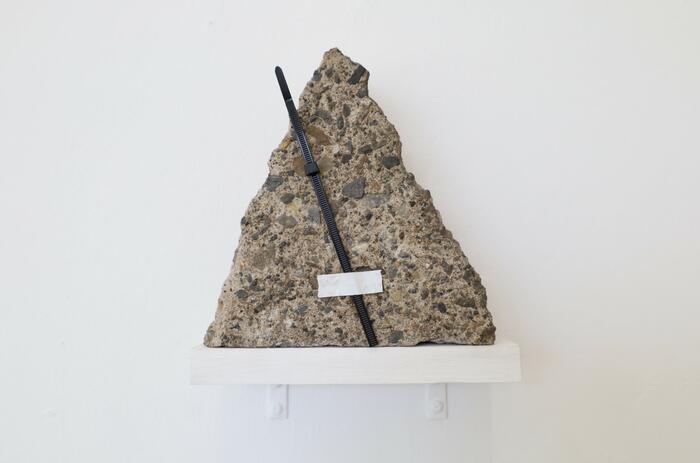
The Museo de Arte Contemporáneo in Santiago, Chile, presents Trabajo de campo (Fieldwork), the first retrospective exhibition of the multidisciplinary artist, curated by Joselyne Contreras, at its Parque Forestal venue.
FRANCISCA BENÍTEZ AND THE TRANSFORMATION OF SPACE AND SOCIETY
The Museo de Arte Contemporáneo in Santiago, Chile, presents Trabajo de campo (Fieldwork), the first retrospective exhibition of the multidisciplinary artist, curated by Joselyne Contreras, at its Parque Forestal venue.
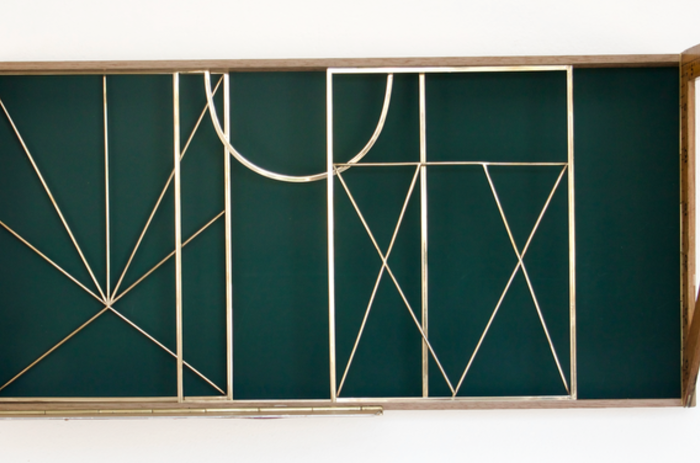
Galería del Paseo presents Tiza, an exhibition by Ishmael Randall-Weeks that explores the nature of everyday life through its limitations and potential. The exhibition invites the public to reflect on how the relationship between humans and the environment is constructed.
REFLEXIONS ON EVERYDAY LIFE AND ENVIRONMENT IN THE WORK OF ISHMAEL RANDALL-WEEKS
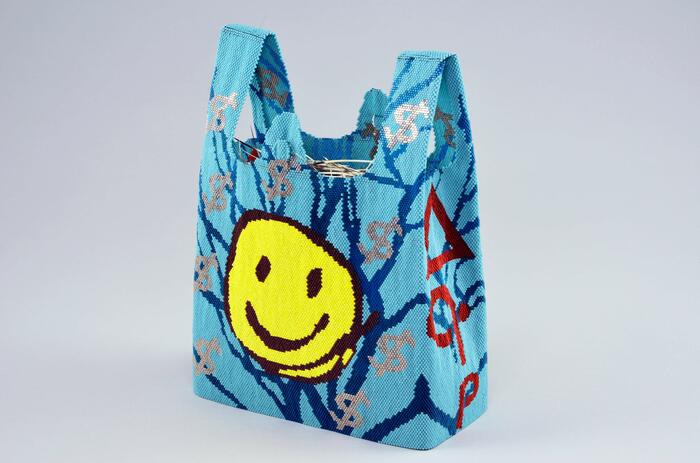
The Eiteljorg Museum of American Indians and Western Art will host one of the largest exhibitions of contemporary Native bead art ever presented in North America: Radical Stitch features approximately 100 works of bead art highlighting Native techniques and designs that tell stories and address current issues.
RADICAL STITCH: THE EVOLVING ART OF BEADWORK
The Eiteljorg Museum of American Indians and Western Art will host one of the largest exhibitions of contemporary Native bead art ever presented in North America: Radical Stitch features approximately 100 works of bead art highlighting Native techniques and designs that tell stories and address current issues.
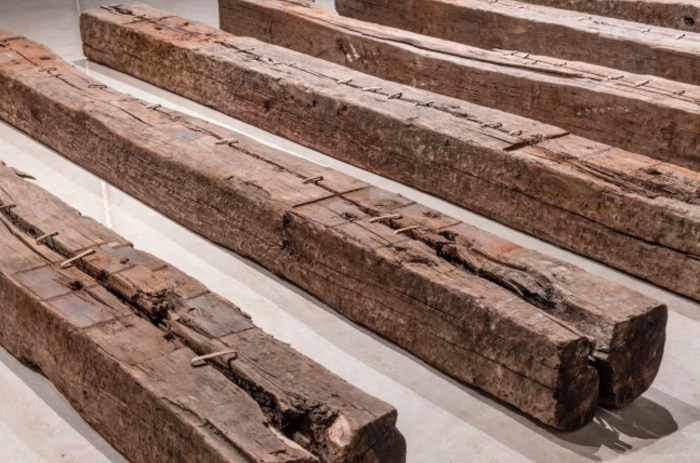
The Museo Universitario de Arte Contemporáneo (MUAC) presents the work of French artist Kader Attia: A Descent into Paradise.
ATTIA'S GAZE AT THE MUAC
The Museo Universitario de Arte Contemporáneo (MUAC) presents the work of French artist Kader Attia: A Descent into Paradise.
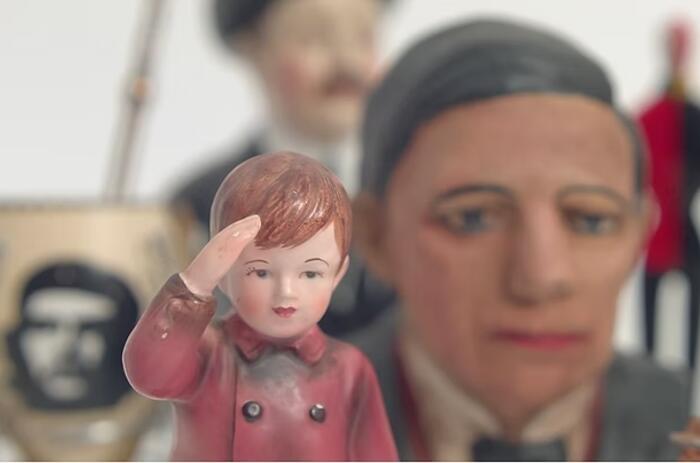
A new group exhibition brings together 17 Argentine artists in New York. Curated by The Bureau of The Unknown Curator, the show features Cecilia Biagini, Ivana Brenner, Rafael Bueno, Bibi Calderaro, Beto De Volder, Dolores Furtado, Julio Grinblatt, Nicolás Guagnini, Claudia Kaatziza Cortínez, Syd Krochmalny, Fabián Marcaccio, Sabrina Merayo Núñez, Luciana Pinchiero, Liliana Porter, Sofía Quirno, Analia Segal, and Pedro Wainer.
THE ARGENTINE INTERNATIONAL AT THE SLIP GALLERY
A new group exhibition brings together 17 Argentine artists in New York. Curated by The Bureau of The Unknown Curator, the show features Cecilia Biagini, Ivana Brenner, Rafael Bueno, Bibi Calderaro, Beto De Volder, Dolores Furtado, Julio Grinblatt, Nicolás Guagnini, Claudia Kaatziza Cortínez, Syd Krochmalny, Fabián Marcaccio, Sabrina Merayo Núñez, Luciana Pinchiero, Liliana Porter, Sofía Quirno, Analia Segal, and Pedro Wainer.

The Miriam and Ira D. Wallach Art Gallery at Columbia University presents Rubén Ortiz-Torres: Zonas de Colaboración, the artist’s first major solo exhibition in New York, curated by Betti-Sue Hertz.
RUBÉN ORTIZ-TORREZ AND THE CULTURAL PARADOXES OF THE GLOBALIZED WORLD
The Miriam and Ira D. Wallach Art Gallery at Columbia University presents Rubén Ortiz-Torres: Zonas de Colaboración, the artist’s first major solo exhibition in New York, curated by Betti-Sue Hertz.
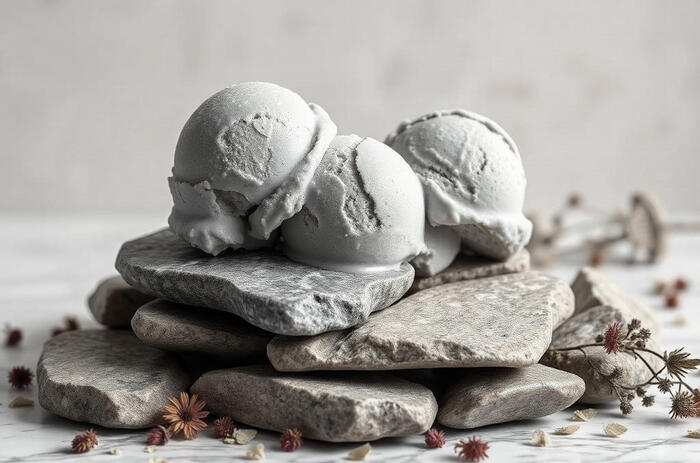
Contemporary art has become a testing ground where the boundaries between disciplines dissolve, giving way to hybrid experiences. In this shifting landscape, artist Cristian Segura introduces an unexpected provocation: an ice cream that is not only tasted but also contemplated.
AN ICE CREAM THAT DEFIES MEMORY: THE REINVENTION OF THE SHIFTING STONE
Contemporary art has become a testing ground where the boundaries between disciplines dissolve, giving way to hybrid experiences. In this shifting landscape, artist Cristian Segura introduces an unexpected provocation: an ice cream that is not only tasted but also contemplated.
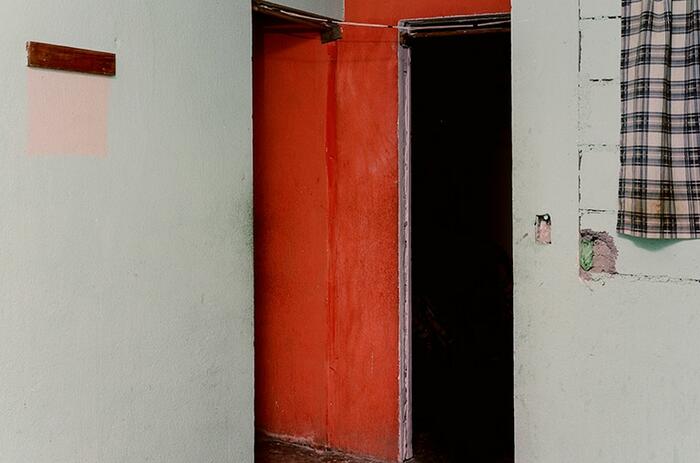
Felipe Romero (Bogota, Colombia, 1992) usually shows in his photographic proposal a high interest in conflict zones. While the scenario reflects this palpable but still intangible tension, it also serves as a reflective framework where the conflict and its protagonists meet.
BORDER HOPELESSNESS THROUGH THE LENS OF FELIPE ROMERO
Felipe Romero (Bogota, Colombia, 1992) usually shows in his photographic proposal a high interest in conflict zones. While the scenario reflects this palpable but still intangible tension, it also serves as a reflective framework where the conflict and its protagonists meet.
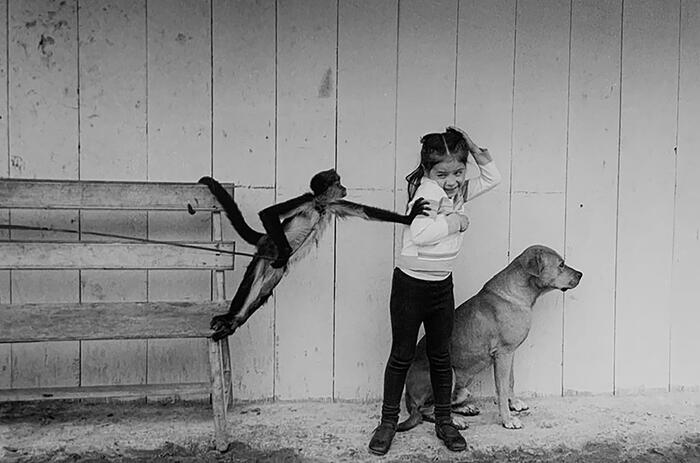
Paths of Life invites viewers on a journey through 45 years of the Mexican photographer's distinguished photographic career; the exhibition presents a captivating combination of previously unpublished images from the artist's personal archive along with her most recent works.
FLOR GARDUÑO AT FOTOFEST´S SPRING SHOWCASE
Paths of Life invites viewers on a journey through 45 years of the Mexican photographer's distinguished photographic career; the exhibition presents a captivating combination of previously unpublished images from the artist's personal archive along with her most recent works.

The Vilcek Foundation has named Argentine Director and Chief Curator of Art Aimé Iglesias Lukin as one of the three recipients of the Vilcek Prize for Creative Promise in Curatorial Work. The award recognizes immigrant contributions to the arts and sciences in the United States.
AIMÉ IGLESIAS LUKIN IS THE WINNER OF THE VILCEK AWARD
The Vilcek Foundation has named Argentine Director and Chief Curator of Art Aimé Iglesias Lukin as one of the three recipients of the Vilcek Prize for Creative Promise in Curatorial Work. The award recognizes immigrant contributions to the arts and sciences in the United States.

CORRESPONDENCES at Kurimanzutto, the ongoing collaboration between Soundwalk Collective and Patti Smith, marks the first time this body of work is exhibited in New York and in a gallery space; the exhibition explores diverse geographies, histories, and natural environments.

The Museo de Arte Contemporáneo in Santiago, Chile, presents Trabajo de campo (Fieldwork), the first retrospective exhibition of the multidisciplinary artist, curated by Joselyne Contreras, at its Parque Forestal venue.
FRANCISCA BENÍTEZ AND THE TRANSFORMATION OF SPACE AND SOCIETY
The Museo de Arte Contemporáneo in Santiago, Chile, presents Trabajo de campo (Fieldwork), the first retrospective exhibition of the multidisciplinary artist, curated by Joselyne Contreras, at its Parque Forestal venue.

Galería del Paseo presents Tiza, an exhibition by Ishmael Randall-Weeks that explores the nature of everyday life through its limitations and potential. The exhibition invites the public to reflect on how the relationship between humans and the environment is constructed.
REFLEXIONS ON EVERYDAY LIFE AND ENVIRONMENT IN THE WORK OF ISHMAEL RANDALL-WEEKS

The Eiteljorg Museum of American Indians and Western Art will host one of the largest exhibitions of contemporary Native bead art ever presented in North America: Radical Stitch features approximately 100 works of bead art highlighting Native techniques and designs that tell stories and address current issues.
RADICAL STITCH: THE EVOLVING ART OF BEADWORK
The Eiteljorg Museum of American Indians and Western Art will host one of the largest exhibitions of contemporary Native bead art ever presented in North America: Radical Stitch features approximately 100 works of bead art highlighting Native techniques and designs that tell stories and address current issues.

The Museo Universitario de Arte Contemporáneo (MUAC) presents the work of French artist Kader Attia: A Descent into Paradise.
ATTIA'S GAZE AT THE MUAC
The Museo Universitario de Arte Contemporáneo (MUAC) presents the work of French artist Kader Attia: A Descent into Paradise.

A new group exhibition brings together 17 Argentine artists in New York. Curated by The Bureau of The Unknown Curator, the show features Cecilia Biagini, Ivana Brenner, Rafael Bueno, Bibi Calderaro, Beto De Volder, Dolores Furtado, Julio Grinblatt, Nicolás Guagnini, Claudia Kaatziza Cortínez, Syd Krochmalny, Fabián Marcaccio, Sabrina Merayo Núñez, Luciana Pinchiero, Liliana Porter, Sofía Quirno, Analia Segal, and Pedro Wainer.
THE ARGENTINE INTERNATIONAL AT THE SLIP GALLERY
A new group exhibition brings together 17 Argentine artists in New York. Curated by The Bureau of The Unknown Curator, the show features Cecilia Biagini, Ivana Brenner, Rafael Bueno, Bibi Calderaro, Beto De Volder, Dolores Furtado, Julio Grinblatt, Nicolás Guagnini, Claudia Kaatziza Cortínez, Syd Krochmalny, Fabián Marcaccio, Sabrina Merayo Núñez, Luciana Pinchiero, Liliana Porter, Sofía Quirno, Analia Segal, and Pedro Wainer.

The Miriam and Ira D. Wallach Art Gallery at Columbia University presents Rubén Ortiz-Torres: Zonas de Colaboración, the artist’s first major solo exhibition in New York, curated by Betti-Sue Hertz.
RUBÉN ORTIZ-TORREZ AND THE CULTURAL PARADOXES OF THE GLOBALIZED WORLD
The Miriam and Ira D. Wallach Art Gallery at Columbia University presents Rubén Ortiz-Torres: Zonas de Colaboración, the artist’s first major solo exhibition in New York, curated by Betti-Sue Hertz.

Contemporary art has become a testing ground where the boundaries between disciplines dissolve, giving way to hybrid experiences. In this shifting landscape, artist Cristian Segura introduces an unexpected provocation: an ice cream that is not only tasted but also contemplated.
AN ICE CREAM THAT DEFIES MEMORY: THE REINVENTION OF THE SHIFTING STONE
Contemporary art has become a testing ground where the boundaries between disciplines dissolve, giving way to hybrid experiences. In this shifting landscape, artist Cristian Segura introduces an unexpected provocation: an ice cream that is not only tasted but also contemplated.

Felipe Romero (Bogota, Colombia, 1992) usually shows in his photographic proposal a high interest in conflict zones. While the scenario reflects this palpable but still intangible tension, it also serves as a reflective framework where the conflict and its protagonists meet.
BORDER HOPELESSNESS THROUGH THE LENS OF FELIPE ROMERO
Felipe Romero (Bogota, Colombia, 1992) usually shows in his photographic proposal a high interest in conflict zones. While the scenario reflects this palpable but still intangible tension, it also serves as a reflective framework where the conflict and its protagonists meet.

Paths of Life invites viewers on a journey through 45 years of the Mexican photographer's distinguished photographic career; the exhibition presents a captivating combination of previously unpublished images from the artist's personal archive along with her most recent works.
FLOR GARDUÑO AT FOTOFEST´S SPRING SHOWCASE
Paths of Life invites viewers on a journey through 45 years of the Mexican photographer's distinguished photographic career; the exhibition presents a captivating combination of previously unpublished images from the artist's personal archive along with her most recent works.

The Vilcek Foundation has named Argentine Director and Chief Curator of Art Aimé Iglesias Lukin as one of the three recipients of the Vilcek Prize for Creative Promise in Curatorial Work. The award recognizes immigrant contributions to the arts and sciences in the United States.
AIMÉ IGLESIAS LUKIN IS THE WINNER OF THE VILCEK AWARD
The Vilcek Foundation has named Argentine Director and Chief Curator of Art Aimé Iglesias Lukin as one of the three recipients of the Vilcek Prize for Creative Promise in Curatorial Work. The award recognizes immigrant contributions to the arts and sciences in the United States.

CORRESPONDENCES at Kurimanzutto, the ongoing collaboration between Soundwalk Collective and Patti Smith, marks the first time this body of work is exhibited in New York and in a gallery space; the exhibition explores diverse geographies, histories, and natural environments.

The Museo de Arte Contemporáneo in Santiago, Chile, presents Trabajo de campo (Fieldwork), the first retrospective exhibition of the multidisciplinary artist, curated by Joselyne Contreras, at its Parque Forestal venue.
FRANCISCA BENÍTEZ AND THE TRANSFORMATION OF SPACE AND SOCIETY
The Museo de Arte Contemporáneo in Santiago, Chile, presents Trabajo de campo (Fieldwork), the first retrospective exhibition of the multidisciplinary artist, curated by Joselyne Contreras, at its Parque Forestal venue.

Galería del Paseo presents Tiza, an exhibition by Ishmael Randall-Weeks that explores the nature of everyday life through its limitations and potential. The exhibition invites the public to reflect on how the relationship between humans and the environment is constructed.
REFLEXIONS ON EVERYDAY LIFE AND ENVIRONMENT IN THE WORK OF ISHMAEL RANDALL-WEEKS

The Eiteljorg Museum of American Indians and Western Art will host one of the largest exhibitions of contemporary Native bead art ever presented in North America: Radical Stitch features approximately 100 works of bead art highlighting Native techniques and designs that tell stories and address current issues.
RADICAL STITCH: THE EVOLVING ART OF BEADWORK
The Eiteljorg Museum of American Indians and Western Art will host one of the largest exhibitions of contemporary Native bead art ever presented in North America: Radical Stitch features approximately 100 works of bead art highlighting Native techniques and designs that tell stories and address current issues.

The Museo Universitario de Arte Contemporáneo (MUAC) presents the work of French artist Kader Attia: A Descent into Paradise.
ATTIA'S GAZE AT THE MUAC
The Museo Universitario de Arte Contemporáneo (MUAC) presents the work of French artist Kader Attia: A Descent into Paradise.

A new group exhibition brings together 17 Argentine artists in New York. Curated by The Bureau of The Unknown Curator, the show features Cecilia Biagini, Ivana Brenner, Rafael Bueno, Bibi Calderaro, Beto De Volder, Dolores Furtado, Julio Grinblatt, Nicolás Guagnini, Claudia Kaatziza Cortínez, Syd Krochmalny, Fabián Marcaccio, Sabrina Merayo Núñez, Luciana Pinchiero, Liliana Porter, Sofía Quirno, Analia Segal, and Pedro Wainer.
THE ARGENTINE INTERNATIONAL AT THE SLIP GALLERY
A new group exhibition brings together 17 Argentine artists in New York. Curated by The Bureau of The Unknown Curator, the show features Cecilia Biagini, Ivana Brenner, Rafael Bueno, Bibi Calderaro, Beto De Volder, Dolores Furtado, Julio Grinblatt, Nicolás Guagnini, Claudia Kaatziza Cortínez, Syd Krochmalny, Fabián Marcaccio, Sabrina Merayo Núñez, Luciana Pinchiero, Liliana Porter, Sofía Quirno, Analia Segal, and Pedro Wainer.

The Miriam and Ira D. Wallach Art Gallery at Columbia University presents Rubén Ortiz-Torres: Zonas de Colaboración, the artist’s first major solo exhibition in New York, curated by Betti-Sue Hertz.
RUBÉN ORTIZ-TORREZ AND THE CULTURAL PARADOXES OF THE GLOBALIZED WORLD
The Miriam and Ira D. Wallach Art Gallery at Columbia University presents Rubén Ortiz-Torres: Zonas de Colaboración, the artist’s first major solo exhibition in New York, curated by Betti-Sue Hertz.

Contemporary art has become a testing ground where the boundaries between disciplines dissolve, giving way to hybrid experiences. In this shifting landscape, artist Cristian Segura introduces an unexpected provocation: an ice cream that is not only tasted but also contemplated.
AN ICE CREAM THAT DEFIES MEMORY: THE REINVENTION OF THE SHIFTING STONE
Contemporary art has become a testing ground where the boundaries between disciplines dissolve, giving way to hybrid experiences. In this shifting landscape, artist Cristian Segura introduces an unexpected provocation: an ice cream that is not only tasted but also contemplated.

Felipe Romero (Bogota, Colombia, 1992) usually shows in his photographic proposal a high interest in conflict zones. While the scenario reflects this palpable but still intangible tension, it also serves as a reflective framework where the conflict and its protagonists meet.
BORDER HOPELESSNESS THROUGH THE LENS OF FELIPE ROMERO
Felipe Romero (Bogota, Colombia, 1992) usually shows in his photographic proposal a high interest in conflict zones. While the scenario reflects this palpable but still intangible tension, it also serves as a reflective framework where the conflict and its protagonists meet.

Paths of Life invites viewers on a journey through 45 years of the Mexican photographer's distinguished photographic career; the exhibition presents a captivating combination of previously unpublished images from the artist's personal archive along with her most recent works.
FLOR GARDUÑO AT FOTOFEST´S SPRING SHOWCASE
Paths of Life invites viewers on a journey through 45 years of the Mexican photographer's distinguished photographic career; the exhibition presents a captivating combination of previously unpublished images from the artist's personal archive along with her most recent works.

The Vilcek Foundation has named Argentine Director and Chief Curator of Art Aimé Iglesias Lukin as one of the three recipients of the Vilcek Prize for Creative Promise in Curatorial Work. The award recognizes immigrant contributions to the arts and sciences in the United States.
AIMÉ IGLESIAS LUKIN IS THE WINNER OF THE VILCEK AWARD
The Vilcek Foundation has named Argentine Director and Chief Curator of Art Aimé Iglesias Lukin as one of the three recipients of the Vilcek Prize for Creative Promise in Curatorial Work. The award recognizes immigrant contributions to the arts and sciences in the United States.

CORRESPONDENCES at Kurimanzutto, the ongoing collaboration between Soundwalk Collective and Patti Smith, marks the first time this body of work is exhibited in New York and in a gallery space; the exhibition explores diverse geographies, histories, and natural environments.

The Museo de Arte Contemporáneo in Santiago, Chile, presents Trabajo de campo (Fieldwork), the first retrospective exhibition of the multidisciplinary artist, curated by Joselyne Contreras, at its Parque Forestal venue.
FRANCISCA BENÍTEZ AND THE TRANSFORMATION OF SPACE AND SOCIETY
The Museo de Arte Contemporáneo in Santiago, Chile, presents Trabajo de campo (Fieldwork), the first retrospective exhibition of the multidisciplinary artist, curated by Joselyne Contreras, at its Parque Forestal venue.

Galería del Paseo presents Tiza, an exhibition by Ishmael Randall-Weeks that explores the nature of everyday life through its limitations and potential. The exhibition invites the public to reflect on how the relationship between humans and the environment is constructed.
REFLEXIONS ON EVERYDAY LIFE AND ENVIRONMENT IN THE WORK OF ISHMAEL RANDALL-WEEKS

The Eiteljorg Museum of American Indians and Western Art will host one of the largest exhibitions of contemporary Native bead art ever presented in North America: Radical Stitch features approximately 100 works of bead art highlighting Native techniques and designs that tell stories and address current issues.
RADICAL STITCH: THE EVOLVING ART OF BEADWORK
The Eiteljorg Museum of American Indians and Western Art will host one of the largest exhibitions of contemporary Native bead art ever presented in North America: Radical Stitch features approximately 100 works of bead art highlighting Native techniques and designs that tell stories and address current issues.

The Museo Universitario de Arte Contemporáneo (MUAC) presents the work of French artist Kader Attia: A Descent into Paradise.
ATTIA'S GAZE AT THE MUAC
The Museo Universitario de Arte Contemporáneo (MUAC) presents the work of French artist Kader Attia: A Descent into Paradise.

A new group exhibition brings together 17 Argentine artists in New York. Curated by The Bureau of The Unknown Curator, the show features Cecilia Biagini, Ivana Brenner, Rafael Bueno, Bibi Calderaro, Beto De Volder, Dolores Furtado, Julio Grinblatt, Nicolás Guagnini, Claudia Kaatziza Cortínez, Syd Krochmalny, Fabián Marcaccio, Sabrina Merayo Núñez, Luciana Pinchiero, Liliana Porter, Sofía Quirno, Analia Segal, and Pedro Wainer.
THE ARGENTINE INTERNATIONAL AT THE SLIP GALLERY
A new group exhibition brings together 17 Argentine artists in New York. Curated by The Bureau of The Unknown Curator, the show features Cecilia Biagini, Ivana Brenner, Rafael Bueno, Bibi Calderaro, Beto De Volder, Dolores Furtado, Julio Grinblatt, Nicolás Guagnini, Claudia Kaatziza Cortínez, Syd Krochmalny, Fabián Marcaccio, Sabrina Merayo Núñez, Luciana Pinchiero, Liliana Porter, Sofía Quirno, Analia Segal, and Pedro Wainer.

The Miriam and Ira D. Wallach Art Gallery at Columbia University presents Rubén Ortiz-Torres: Zonas de Colaboración, the artist’s first major solo exhibition in New York, curated by Betti-Sue Hertz.
RUBÉN ORTIZ-TORREZ AND THE CULTURAL PARADOXES OF THE GLOBALIZED WORLD
The Miriam and Ira D. Wallach Art Gallery at Columbia University presents Rubén Ortiz-Torres: Zonas de Colaboración, the artist’s first major solo exhibition in New York, curated by Betti-Sue Hertz.

Contemporary art has become a testing ground where the boundaries between disciplines dissolve, giving way to hybrid experiences. In this shifting landscape, artist Cristian Segura introduces an unexpected provocation: an ice cream that is not only tasted but also contemplated.
AN ICE CREAM THAT DEFIES MEMORY: THE REINVENTION OF THE SHIFTING STONE
Contemporary art has become a testing ground where the boundaries between disciplines dissolve, giving way to hybrid experiences. In this shifting landscape, artist Cristian Segura introduces an unexpected provocation: an ice cream that is not only tasted but also contemplated.

Felipe Romero (Bogota, Colombia, 1992) usually shows in his photographic proposal a high interest in conflict zones. While the scenario reflects this palpable but still intangible tension, it also serves as a reflective framework where the conflict and its protagonists meet.
BORDER HOPELESSNESS THROUGH THE LENS OF FELIPE ROMERO
Felipe Romero (Bogota, Colombia, 1992) usually shows in his photographic proposal a high interest in conflict zones. While the scenario reflects this palpable but still intangible tension, it also serves as a reflective framework where the conflict and its protagonists meet.

Paths of Life invites viewers on a journey through 45 years of the Mexican photographer's distinguished photographic career; the exhibition presents a captivating combination of previously unpublished images from the artist's personal archive along with her most recent works.
FLOR GARDUÑO AT FOTOFEST´S SPRING SHOWCASE
Paths of Life invites viewers on a journey through 45 years of the Mexican photographer's distinguished photographic career; the exhibition presents a captivating combination of previously unpublished images from the artist's personal archive along with her most recent works.

The Vilcek Foundation has named Argentine Director and Chief Curator of Art Aimé Iglesias Lukin as one of the three recipients of the Vilcek Prize for Creative Promise in Curatorial Work. The award recognizes immigrant contributions to the arts and sciences in the United States.
AIMÉ IGLESIAS LUKIN IS THE WINNER OF THE VILCEK AWARD
The Vilcek Foundation has named Argentine Director and Chief Curator of Art Aimé Iglesias Lukin as one of the three recipients of the Vilcek Prize for Creative Promise in Curatorial Work. The award recognizes immigrant contributions to the arts and sciences in the United States.

CORRESPONDENCES at Kurimanzutto, the ongoing collaboration between Soundwalk Collective and Patti Smith, marks the first time this body of work is exhibited in New York and in a gallery space; the exhibition explores diverse geographies, histories, and natural environments.

The Museo de Arte Contemporáneo in Santiago, Chile, presents Trabajo de campo (Fieldwork), the first retrospective exhibition of the multidisciplinary artist, curated by Joselyne Contreras, at its Parque Forestal venue.
FRANCISCA BENÍTEZ AND THE TRANSFORMATION OF SPACE AND SOCIETY
The Museo de Arte Contemporáneo in Santiago, Chile, presents Trabajo de campo (Fieldwork), the first retrospective exhibition of the multidisciplinary artist, curated by Joselyne Contreras, at its Parque Forestal venue.

Galería del Paseo presents Tiza, an exhibition by Ishmael Randall-Weeks that explores the nature of everyday life through its limitations and potential. The exhibition invites the public to reflect on how the relationship between humans and the environment is constructed.
REFLEXIONS ON EVERYDAY LIFE AND ENVIRONMENT IN THE WORK OF ISHMAEL RANDALL-WEEKS

The Eiteljorg Museum of American Indians and Western Art will host one of the largest exhibitions of contemporary Native bead art ever presented in North America: Radical Stitch features approximately 100 works of bead art highlighting Native techniques and designs that tell stories and address current issues.
RADICAL STITCH: THE EVOLVING ART OF BEADWORK
The Eiteljorg Museum of American Indians and Western Art will host one of the largest exhibitions of contemporary Native bead art ever presented in North America: Radical Stitch features approximately 100 works of bead art highlighting Native techniques and designs that tell stories and address current issues.

The Museo Universitario de Arte Contemporáneo (MUAC) presents the work of French artist Kader Attia: A Descent into Paradise.
ATTIA'S GAZE AT THE MUAC
The Museo Universitario de Arte Contemporáneo (MUAC) presents the work of French artist Kader Attia: A Descent into Paradise.

A new group exhibition brings together 17 Argentine artists in New York. Curated by The Bureau of The Unknown Curator, the show features Cecilia Biagini, Ivana Brenner, Rafael Bueno, Bibi Calderaro, Beto De Volder, Dolores Furtado, Julio Grinblatt, Nicolás Guagnini, Claudia Kaatziza Cortínez, Syd Krochmalny, Fabián Marcaccio, Sabrina Merayo Núñez, Luciana Pinchiero, Liliana Porter, Sofía Quirno, Analia Segal, and Pedro Wainer.
THE ARGENTINE INTERNATIONAL AT THE SLIP GALLERY
A new group exhibition brings together 17 Argentine artists in New York. Curated by The Bureau of The Unknown Curator, the show features Cecilia Biagini, Ivana Brenner, Rafael Bueno, Bibi Calderaro, Beto De Volder, Dolores Furtado, Julio Grinblatt, Nicolás Guagnini, Claudia Kaatziza Cortínez, Syd Krochmalny, Fabián Marcaccio, Sabrina Merayo Núñez, Luciana Pinchiero, Liliana Porter, Sofía Quirno, Analia Segal, and Pedro Wainer.

The Miriam and Ira D. Wallach Art Gallery at Columbia University presents Rubén Ortiz-Torres: Zonas de Colaboración, the artist’s first major solo exhibition in New York, curated by Betti-Sue Hertz.
RUBÉN ORTIZ-TORREZ AND THE CULTURAL PARADOXES OF THE GLOBALIZED WORLD
The Miriam and Ira D. Wallach Art Gallery at Columbia University presents Rubén Ortiz-Torres: Zonas de Colaboración, the artist’s first major solo exhibition in New York, curated by Betti-Sue Hertz.

Contemporary art has become a testing ground where the boundaries between disciplines dissolve, giving way to hybrid experiences. In this shifting landscape, artist Cristian Segura introduces an unexpected provocation: an ice cream that is not only tasted but also contemplated.
AN ICE CREAM THAT DEFIES MEMORY: THE REINVENTION OF THE SHIFTING STONE
Contemporary art has become a testing ground where the boundaries between disciplines dissolve, giving way to hybrid experiences. In this shifting landscape, artist Cristian Segura introduces an unexpected provocation: an ice cream that is not only tasted but also contemplated.

Felipe Romero (Bogota, Colombia, 1992) usually shows in his photographic proposal a high interest in conflict zones. While the scenario reflects this palpable but still intangible tension, it also serves as a reflective framework where the conflict and its protagonists meet.
BORDER HOPELESSNESS THROUGH THE LENS OF FELIPE ROMERO
Felipe Romero (Bogota, Colombia, 1992) usually shows in his photographic proposal a high interest in conflict zones. While the scenario reflects this palpable but still intangible tension, it also serves as a reflective framework where the conflict and its protagonists meet.

Paths of Life invites viewers on a journey through 45 years of the Mexican photographer's distinguished photographic career; the exhibition presents a captivating combination of previously unpublished images from the artist's personal archive along with her most recent works.
FLOR GARDUÑO AT FOTOFEST´S SPRING SHOWCASE
Paths of Life invites viewers on a journey through 45 years of the Mexican photographer's distinguished photographic career; the exhibition presents a captivating combination of previously unpublished images from the artist's personal archive along with her most recent works.

